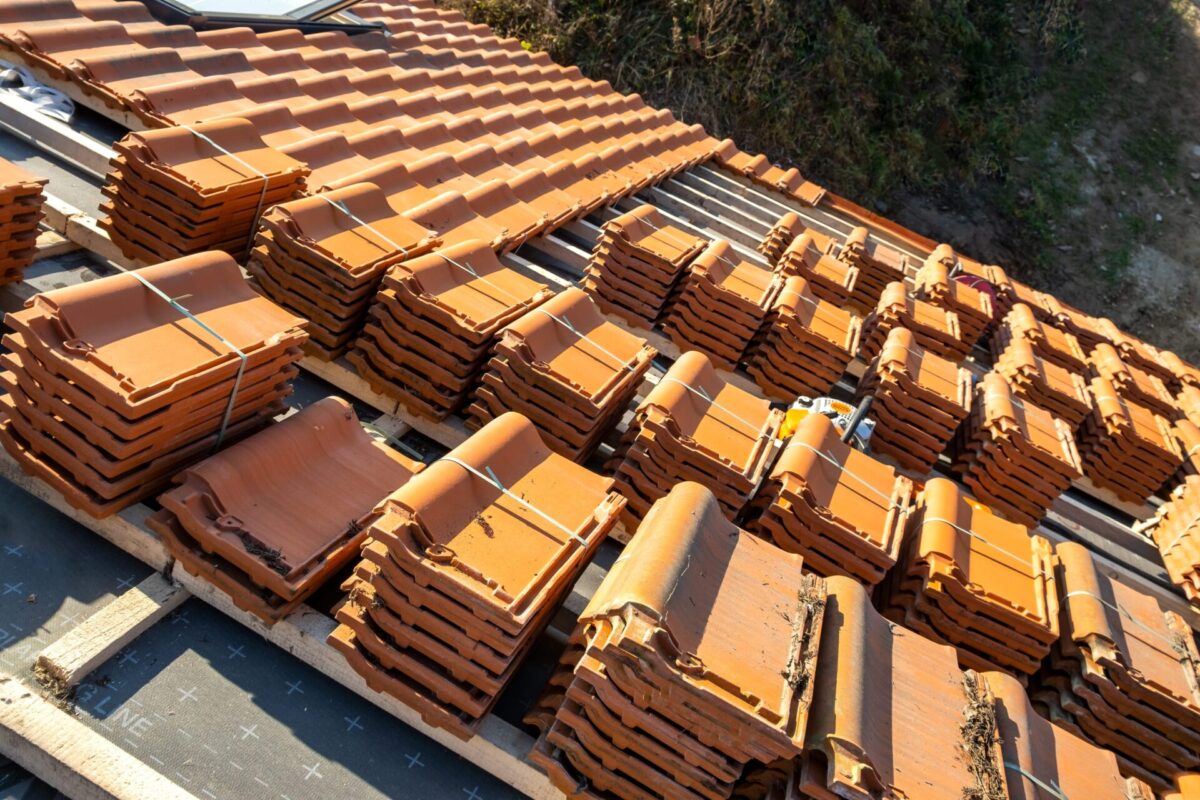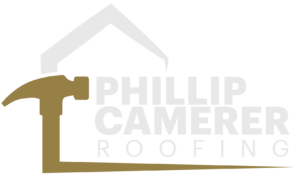All About Roof Decking: Types, Functions, and Benefits

Posted on May 25, 2023 by Phillip Camerer
Roof decking, also referred to as roof sheathing, is an essential part of a home’s construction. It’s a design to provide both structural support and roofing insulation. It is often made up of several layers of materials and is generally in one of these five forms:
- Concrete decking
- Oriented Strand Board (OSB)
- Plywood sheathing
- Skip sheathing
- Wood sheathing
Different types of roof sheathing are available on the market today, each with its advantages and disadvantages. The decking material must get chosen carefully, as it affects the durability and longevity of a home’s roof. In today’s blog, we’ll discuss the ins and outs of roof decking and how it all works.
The Function of Roof Sheathing in Home Construction
The decking is a layer of material placed on top of a roofing truss and joist system, serving as a base to secure a waterproofing layer. The decking also helps to reduce air infiltration, improve energy efficiency, and provide additional strength to the entire roof system.
In addition, it’s an extra layer of protection that helps to protect the roof from extreme weather conditions, such as:
- High wind
- Torrential rain
- Blowing snow
With its many protective benefits, it is no surprise that roof sheathing has become a critical component of home construction in today’s market.
Pros and Cons of the Different Types of Decking
Many different types of materials get used for decking, each with unique benefits. As a durable surface, the decking on a home’s roof can withstand the elements, protect the roof truss from damage, and shield its occupants from outside weather threats. Among the different forms of roof sheathing materials mentioned earlier, each has unique advantages and disadvantages.
Concrete Decking
Commonly used on flat roofs for commercially-owned buildings, concrete decking requires steel beams to support the load of the sheathing. It is known for being fire-resistant, long-lasting, and best suited for roof coating or paint. In addition, the material can protect against rot and insect infestation.
Conversely, concrete sheathing is quite expensive to install and maintain, often requiring a larger workforce for installation, maintenance, and repair.
Oriented Strand Board (OSB)
An OSB is considered a synthetic sheathing constructed from different wood chips, mixed with glues, and compressed to form. It has a high resistance to warping or swelling. It is the most widely economical choice for homebuilders on a tight budget.
But if a roof with this sheathing is not adequately cared for or maintained, water will eventually infiltrate the waterproof membrane and damage the OSB. Some OSBs get manufactured with phenol formaldehyde; it’s essential to know the manufacturer of the board and the date of installation to determine if there are any risks associated with formaldehyde emissions.
Plywood Sheathing
Similar to OSB, plywood is wood layers that get bonded together using a variety of glue adhesives. It is lightweight, easy to work with, and comes in various pre-cut sizes. Furthermore, it is often resistant to swelling if it gets wet.
Although panels come in various sizes, the boards are often small, which means purchasing twice as many to get the job done.
Skip Sheathing
With skip sheathing, it’s more about the installation than the material. Skip sheathing can come in various forms, from wooden planks to OSB or plywood; it’s all about spacing and placement to allow airflow to pass through the sheathing to aid in drying after exposure to moisture.
Overall this cost-effective approach is a good choice for shake shingles, metal roofing, or tile roofs, where a large portion of a roofing budget like this will get consumed. It’s also not an effective decking for wet, damp climates, mainly found along coastal waterways or areas prone to heavy rainfall.
Wood Sheathing
The wood sheathing is a solid choice for anchoring down asphalt or composite shingles. Wood decking is known for its superior insulation and robust longevity.
Although in terms of weight and size, wood decking is a challenge to install and susceptible to warping over time.
Choosing the Right Type of Decking for Your Home
When choosing the right type of roof decking for your home, there are several factors to consider. From the cost of materials to the durability, longevity, and frequency of replacement, you should consider all these factors in your decision-making process.
You should also consider how much maintenance each type of roof deck material will require. That way, you can guarantee you are getting the best value for your money.
Understanding all these factors will help you make an informed decision about which type of decking best suits your home’s roofing truss system and roof budget.
Talk With A Roofing Contractor
If you need help selecting the correct type of decking for a new roof, contact the pros at Phillip Camerer Roofing Today at (417) 451-5479. Their roofing experts can help guide you on the best decking option for your home and the best choice for your budget. Don’t delay; call today!
